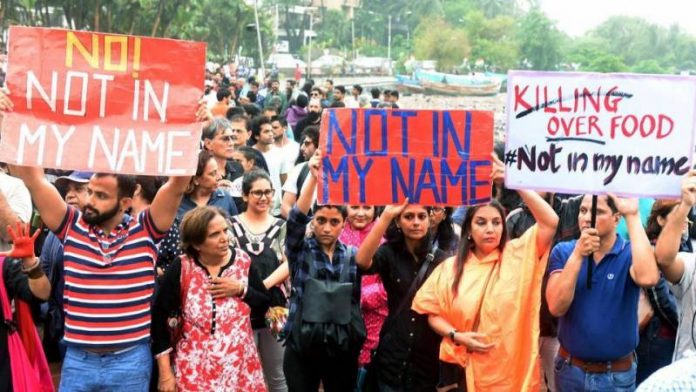By M A Mufazzal; Jawaharlal Nehru University
The outdated culture of vigilantism or mob lynching in America has now been imported in India and is being practiced in an epidemic proportion in modern India. The tradition of mob lynching in America was generally associated with the killing of African Americans including women by white men in the course of Civil War and World War II, particularly between 1889 and 1918.
By exploiting this terrorizing lunacy, mobs lynched blacks, burned them alive, or hacked them to death on the pretext of casual social transgressions such as, stealing a cow, arguing with a white man, or attempting to register to vote. While the findings of most accounts of time suggest that, in almost eighty percent of the cases there were no sexual charges alleged, let alone be proven.
At times when mobs were on rampage and lynching became common in America, in his open letter “mobs and lynchings are the handmaidens of anarchy” President Roosevelt noted that “Mob violence is one form of anarchy and that anarchy is a forerunner of tyranny”
Now by and large, through organized slaughter of a particular community or the other, the same model in addition with other traditional forms of brutalities came into practice in modern India, probably to elude law enforcement as mobs possess no identity. In recent past, the cases of lynching with no further proper handling imply a steady inching towards ochlocracy that is often equated with tyranny of the majority.
The false justifications given in cases of lynching in India are nearly the same as were in the case of African-Americans. Reasons/ excuses cited here in India were ‘stealing children’ in the case of Jharkhand, ‘eating beef’ in Dadri lynching, ‘smuggling cows’ in Alwar lynching, 16 years teenager Junaid abused with religious slurs and ultimately stabbed to death in Haryana and in the most recent Hapur incident, just after a 45-year-old man Qasim was lynched to death, a 65-year-old was brutally assaulted by the lynch mob and forced to confess to having slaughtered a cow.
Theoretically analyzing the lynching tragedy in her book “Popular Injustice: Violence, Community, and Law in Latin America” Angelina Snodgrass Godoy points out that lynch violence often erupts in response to non-criminal acts, suggesting that it is not crime or criminality on the part of the victims but more a means of imposing autonomy on the part of the lynchers.
Lynching culture in India has been internalized through complex dimensions involving religio-political and socio-economic issues, to which populism seems to be instrumental. Economic frustration and alarming rise in youth unemployment has pushed them into the hands of populists, to be used for their political ambitions. At times, this religiously or otherwise, radicalized youth turn into an excited mob, where individuality loses itself in the frenzy and consequently a serious drama of death and pain takes place.
Religious fervor and divine retribution intertwined with economic frustration further aggravated by right wing populist the culture of mob lynching is increasingly becoming a new normal in our land. Much to the disappointment of those who have faith in law and order, the atrocities are carried out in the presence of police and other authorities whether be it the case of Jharkhand lynching or Hapur incident wherein the police personnel were mute spectators. A picture has also gone viral wherein a group of policemen are seen escorting men dragging the body of lynch victim.
In the Indian context, the most ironic aspect of this deadly play is administrative mal activism as the police books the victims instead, as was in the case of Alwar lynching. For lynchers, law and order is not a means to deter them, but instead to be of help and inadvertent permissibility of vigilantism. Advertent or inadvertent permissibility of mob violence compromises with criminal justice system. And this will further brutalize the youths involved in mob crimes paving the way to anarchism.
All stakeholders and authorities must be well convinced that lynching is a potential threat to the safety and security of a society and a lethal blow to any thriving system or institution.
About Author: Research Scholar, writer and commentator, frequently writes on national and international issues.


